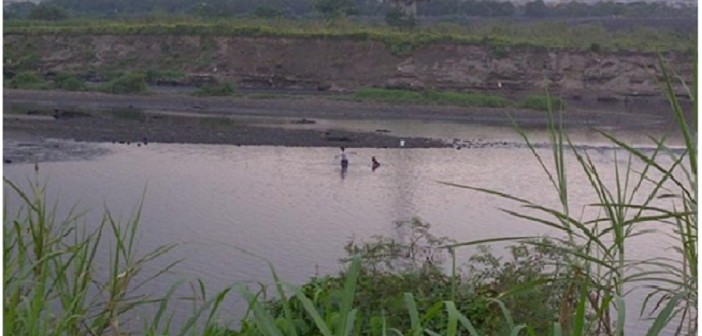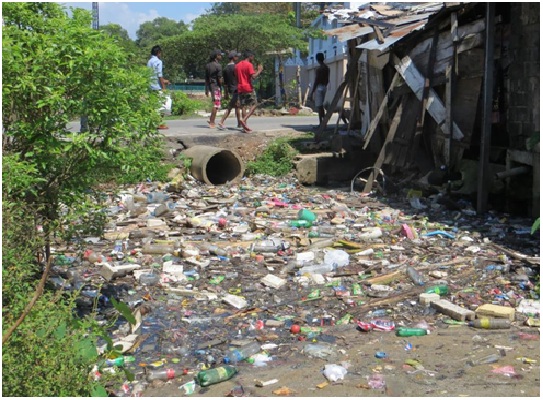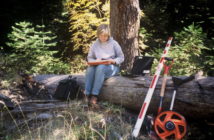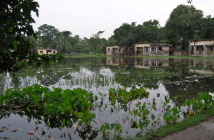Rob McInnes :
Across towns and cities in the developing world, the scene is all too common: a heavily polluted black ditch, discarded plastic bottles bobbing and amassing on the surface of the contaminated watercourse, untreated effluent and highway drainage seeping ceaselessly into the channel and the stench of methane and faeces wafting through the warm urban breeze. The backs of informal settlements fringe these polluted shores as urban populations shun the unsightly drains. As chronic pollution and environmental degradation hasten the prevalence of pest species, increase the potential for the spread of disease and undermine human health often the prevailing wisdom results in infilling and the conversion of open channels to buried concrete pipes. Against this background, it is a paradox that these degraded urban drains, streams and rivers are often great places to observe local wetland birds such as night herons and egrets as they opportunistically gorge themselves on the available smorgasbord of invertebrates, amphibians and oxygen starved fish.
This picture highlights one, if not the main, challenge facing urban wetlands. Often wetlands, however degraded or polluted, can continue to provide vital but unacknowledged functions and services which underpin human well-being. Yet, in many towns and cities unless there is an obvious and clearly recognised value, wetlands fail to be adequately considered in traditional decision-making and their further degradation and loss prevails. Through appropriate management interventions, the black ditch could be transformed into a multi-functional solution provider acting as a waste water treatment facility, a flood retention area, a natural air conditioner, a carbon store, a source of fuel and medicinal plants and also a wildlife habitat for a broad variety of species which could control pests and disease rather than a buried pipe.
The potential of wetlands to be considered as systemic solutions (sensu Everard & McInnes, 2013), or low-input technologies which use natural processes to optimise benefits across the spectrum of ecosystem services and their beneficiaries is still poorly integrated into urban management and planning. A review conducted on behalf of the United Nations Human Settlements Program (UN-Habitat) demonstrated that even the most biodiversity aware and green cities fail to recognise the full range of ecosystem services provided by natural systems within urban areas. This failure of urban managers and planners to recognise ecosystem services and the benefits they bring extends across different socioeconomic and geographical environments and is not just an issue in the developing world. The inability to appreciate the benefits provided by natural infrastructure is greatest for wetlands, where some of the essential services, such as the storage, recycling and processing of nutrients, the accumulation of organic matter, carbon storage and the role of pollination, are rarely visible in decision-making (McInnes, 2013).
If key governmental stakeholders are not aware of the importance or prevalence of the vital services that wetlands perform, then their preclusion from and integration into decision-making is almost inevitable. However, the local knowledge and understanding of communities who directly interact with urban wetlands can often paint a different picture. Thai immigrant workers in Taipei are often seen to be exploiting the free food available from the fish populations in wetlands constructed as water treatment and recreational areas along the banks of the Danshui River (see the featured image). Similarly, in the wetlands of urban Colombo, Sri Lanka, local residents often collect medicinal plants, such as nika nika (Sesbania), for their own personal use and administration. However, there is a dis-connect between the local knowledge and use and the information used by local governments in decision-making. Urban managers and planners need to improve a range of techniques, approaches or tools to ensure that the full range of benefits provided by wetlands is considered and incorporated into decision-making. A starting point for this is the simple recognition of the ecosystem services being provided. This can take the form of a simple binary (presence-absence) assessment of a list of potential ecosystem services and does not necessarily need to involve costly and time-consuming monetisation exercises (which are often flawed as they fail to recognise the full range of values, use valuation techniques which utilise inappropriate value transfer methods, do not adequately take into account changing economic drivers over time and simplify complex ecological relationships towards reductive services with a market value). The implementation of a simple approach to recognising ecosystem services, which incorporates local and city-wide values, is fully commensurate with the tiered basis of seeking to recognise, demonstrate and capture value of services as advocated through the work of The Economic of Ecosystems and Biodiversity (TEEB, 2010) and would raise the visibility of the multiple values of urban wetlands.
However, there are other factors that require consideration when trying to raise the visibility of the benefits that wetlands provide in urban areas. Often the promotion of systemic solutions such as multi-functional wetlands or the wider potential of blue-green infrastructure, is often perceived as “too good to be true” and hence automatically mistrusted. This attitude is often underpinned by a blind faith in the confidence behind traditional engineered solutions (such as building flood embankments or implementing electro-mechanical water treatment plants) to solve problems. Institutional structures and silos have been constructed in local governments across the world, and within the large consultancies upon which they depend for implementing projects, that prevent the cross fertilisation of natural and man-made solutions. Consequently biodiversity in towns and cities has become the responsibility of nature conservation or environmental agencies which often fixate on the rare, threatened and charismatic species and habitats and not on the utilitarian values of the lowest trophic levels, such as nematodes, earthworms, fungi and bacteria (Dobson et al. 2006). The choice is often “either-or” not integration of both natural and engineered solutions. This is despite that fact that where the delivery of multiple ecosystem services has been the objective within an urban area it has been demonstrated that the delivery of collateral ecosystem services will flow from the protection, restoration and management of biodiverse habitats (Chan et al. 2006).
Therefore, it is worth remembering that cities are human constructs and, as such, humanity has the power to steer and alter their developmental trajectories if decision-makers are provided with the appropriate knowledge, understanding and capacity to alter existing management approaches. The failure to recognise the basic ecological relationships and value of natural infrastructure that support all ecosystem services raises serious concerns regarding the integration of the multiple benefits of natural systems into decision-making.
At the Eleventh Meeting of the Conference of the Parties to the Convention on Wetlands (Ramsar, Iran, 1971) in 2012, Resolution XI.11 on the Principles for the planning and management of urban and peri-urban wetlands was adopted (Box 1). These principles recognised that urban and peri-urban wetlands provide a range of ecosystem services, including providing food, water and fuel, improving water quality, assisting in water security, mitigating natural hazards through the regulation of flooding and reduction of storm surges, regulating local climate, as well as the positive contribution that wetlands can make to people’s physical and mental well-being. They also acknowledged the importance of integrating local knowledge into decision-making and the need for governments to act upon these principles, further disseminate them and ensure that they are taken up by the sectors and levels of government responsible for the planning and management of urban and peri-urban environments.
Only when the principles advocated in Resolution XI.11 of the Ramsar Convention have become the norm will wetlands become mainstreamed as solution providers within the urban landscape. Unfortunately progress towards this goal remains slow and uneven. In the meantime, a clarion call goes out to multiple stakeholders in urban areas as action is required to continue to recognise the multiple values or urban wetlands and to bring these benefits to the attention of urban managers and planners so that genuinely integrated and sustainable outcomes can be achieved and the wise use of wetlands in towns and cities can be achieved.
References
Chan, K.M., Shaw, M.R., Cameron, D.R., Underwood, E.C., & Daily, G.C. 2006. Conservation planning for ecosystem services. PLoS Biology 4, e379. doi:10.1371/JOURNAL.PBIO.0040379
Dobson, A., Lodge, D., Alder, J., Cumming, G.S., Keymer, J., McGlade, J., Mooney, H., Rusak, J.A., Sala, O., Wolters, V., Wall, D., Winfree, R. & Xenopoulos, M.A. 2006. Habitat loss, trophic collapse and the decline of ecosystem services. Ecology 87: 1915-1924.
Everard, M. & McInnes, R.J. 2013. Systemic solutions for multi-benefit water and environmental management. Sci. Tot. Env. 461?462:?170?179.
McInnes, R.J. 2013. Recognising wetland ecosystem services within urban case studies. Mar. Fresh. Res. 64:?1-14.
Ramsar Convention. 2012. Resolution XI.11. Principles for the planning and management of urban and peri-urban wetlands. Available at http://www.ramsar.org [accessed 3 June 2015].
TEEB. 2010. The economics of ecosystems and biodiversity: mainstreaming the economics of nature: a synthesis. Available at: http://www.teebweb.org [accessed 3 June 2015]
Rob McInnes (RM Wetlands and Environment Ltd, Littleworth, Oxfordshire, SN7 8EQ, UK. rob@rmwe.co.uk) is an independent environmental specialist with over 20 years experience in the research, management, restoration and governance of wetland ecosystems. Based in the UK, Rob regularly conducts work across the world on a range of wetland issues, including urban wetlands, for a variety of organisations including the Ramsar Convention, UN-Habitat, the World Bank, UNESCO, IUCN, Wetlands International as well as for local and national governments, civil society organisations, universities and private companies.





